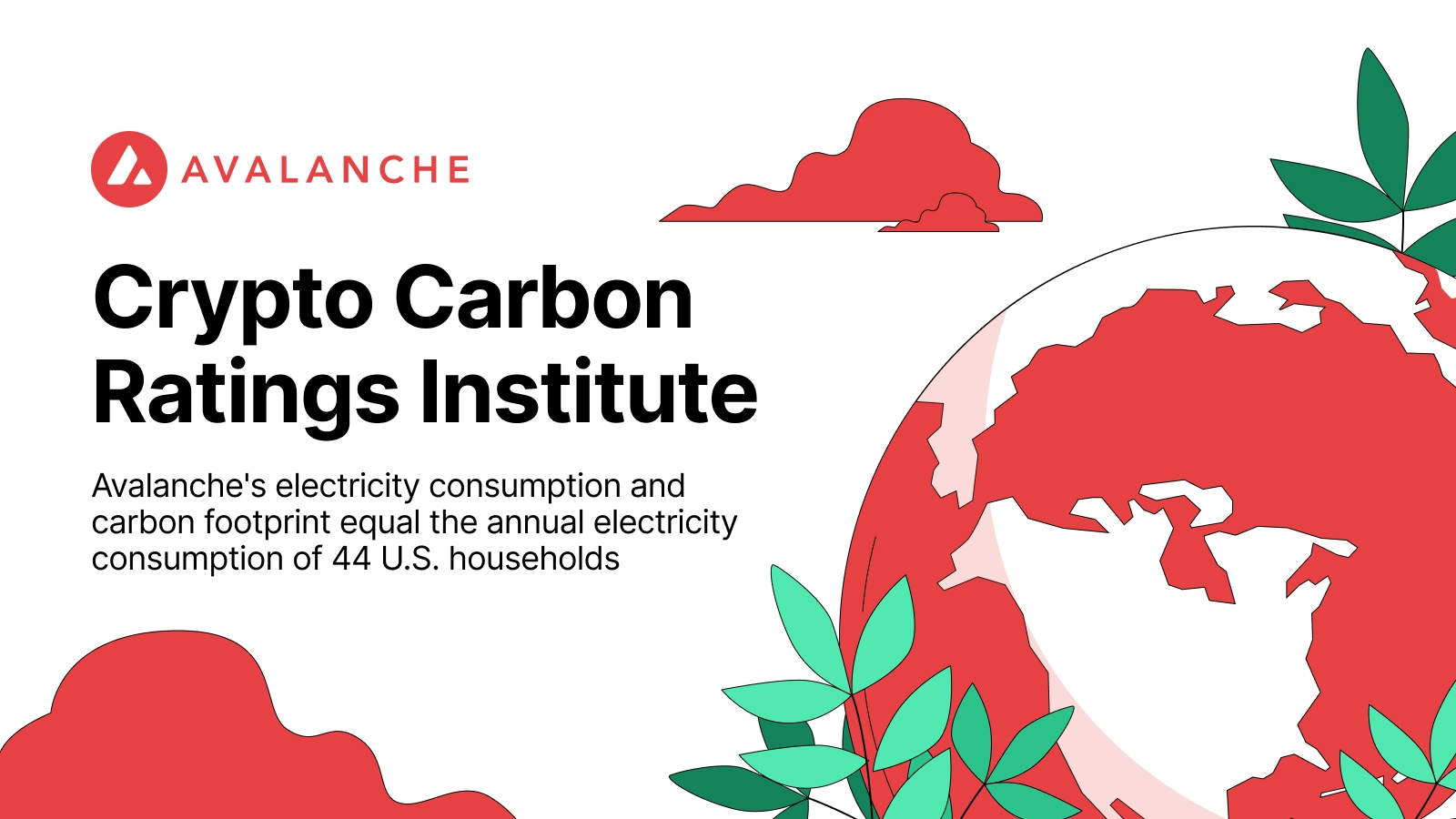CCRI Finds Avalanche Emits 12x Less CO2 Than Ethereum, 300,000x Less CO2 Than Bitcoin
CCRI Finds Avalanche Emits 12x Less CO2 Than Ethereum, 300,000x Less CO2 Than Bitcoin
Oct 17, 2023 / By Avalanche / 3 Minute Read

The Crypto Carbon Ratings Institute (CCRI) has assessed the energy efficiency and carbon intensity of seven leading Proof-of-Stake Layer-1 networks.
The Crypto Carbon Ratings Institute (CCRI), a research company focused on the environmental impact of cryptocurrencies, recently released its annual PoS Benchmarking Study, which finds that the Avalanche public blockchain ecosystem uses just 8.2% of the energy consumed by the Ethereum network, and only 0.00034% that of the Bitcoin blockchain.
Proof-of-stake (PoS) blockchain protocols are superior in their energy efficiency compared to Proof-of-work (PoW) protocols like Bitcoin. Yet, energy requirements and associated carbon emissions of individual PoS systems differ significantly. In the 2023 PoS Benchmarking study, CCRI researchers assessed the electricity consumption and associated carbon footprint of Algorand (ALGO), Avalanche (AVAX), Cardano (ADA), Cosmos (ATOM), Ethereum (ETH), Polkadot (DOT), and Solana (SOL).
The study found that the carbon footprints of PoS networks vary from 71 to 2,088 tonnes of CO2e (tCO2e) per annum. With 469.8 MWh/year and 178.3 tCO2e, the entirety of Avalanche’s electricity consumption and carbon footprint is equivalent to the annual electricity consumption of 44 U.S. households, or carbon emissions worth 29 roundtrip flights from Munich to San Francisco. Compared to last year’s report, Avalanche’s electricity consumption decreased by 4% despite an accelerated rate of Subnet launches.

Inline image from: CCRI Finds Avalanche Emits 12x Less CO2 Than Ethereum, 300,000x Less CO2 Than Bitcoin
Total annualized network carbon emissions of leading PoS blockchain networks (source: CCRI 2023 PoS Benchmarking Study).
The study also shows that PoS networks differ widely regarding their energy efficiency per node, per transaction, or per market cap. These efficiency differences are largely driven by network design choices, such as hardware requirements, network decentralization, and consensus variations.
"Avalanche's novel protocol is a revolution not only for its scalability and time-to-finality, but energy efficiency as well," said Emin Gun Sirer, founder of Ava Labs. "Sustainability remains one of Ava Labs’ highest priorities."
The electricity consumption per transaction of PoS blockchain networks like Avalanche can be lower than Visa transactions (see UCL study). Beyond payment transactions, PoS networks may support the transition to a low-carbon future by providing the “necessary infrastructure to combat climate change at speed and scale,” as highlighted by a recent WEF report.
“Benchmarking CO2 emissions is the first, vital step to maintaining progress towards energy efficiency, as well as gauging overall climate impact,” said Dr. Christian Stoll, cofounder, the Crypto Carbon Ratings Institute. “Besides tracking climate benefits, these metrics can be a very useful tool for providing transparency to investors, users, and regulators.”
As a new and sustainable blockchain, Avalanche can be a solution to fight climate change. In addition to collaborating with CCRI on assessing the Avalanche protocol’s climate impact since 2021, Ava Labs is committed to additional sustainability projects like the implementation of a plastic-free policy for its in-person events.
Please visit CCRI to view the full report.




